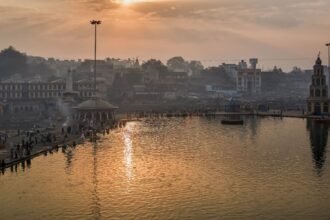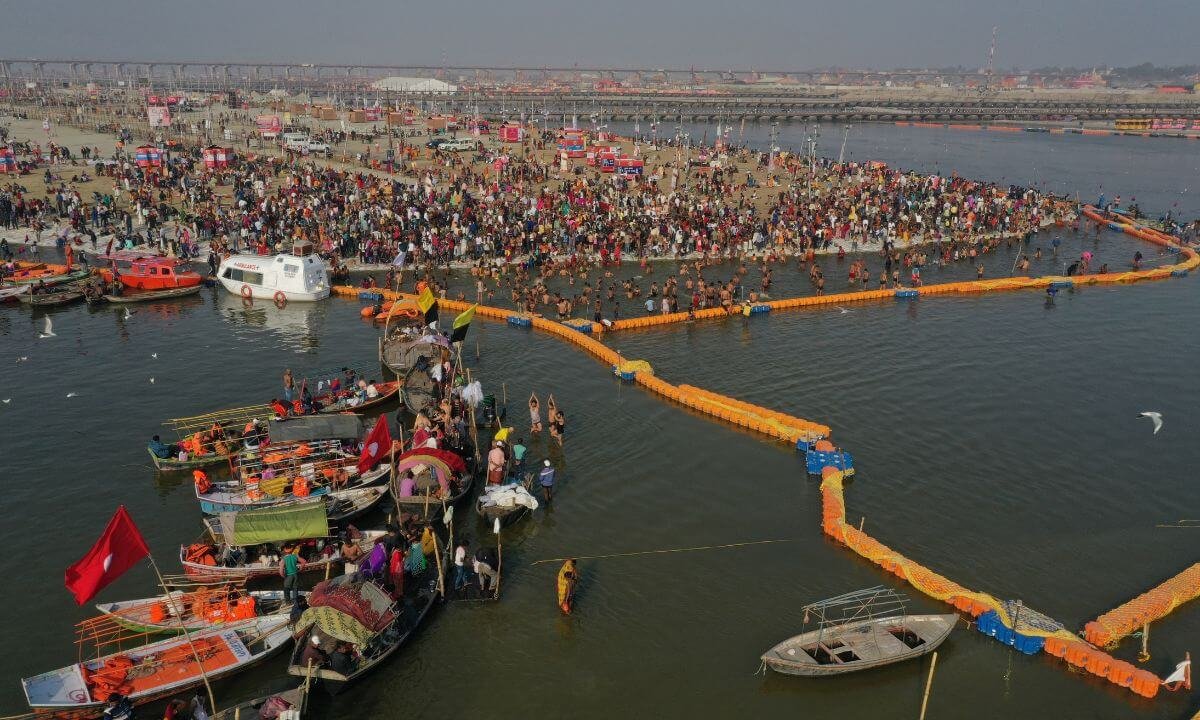The Kumbh Mela 2027 in Nashik is set to be one of the most spiritually and culturally powerful events of the decade. For international visitors seeking an authentic connection to India’s ancient wisdom, this is a once-in-a-lifetime opportunity.
- 1. Visa & Travel Documentation
- 2. Where to Go: Nashik & Trimbakeshwar
- 3. Accommodation Options for Foreigners
- 4. Understanding the Rituals and Their Meaning
- 5. Dress & Cultural Etiquette
- 6. Health, Safety & Hygiene
- 7. Digital Preparedness
- 8. Join Group Travel or Guided Experiences
- 9. Photography & Media Etiquette
- 10. Spiritual Readiness
- In Conclusion
But navigating the world’s largest religious gathering can feel overwhelming—especially for first-time visitors from abroad. This blog provides a comprehensive guide Kumbh Mela 2027 for foreigners attending , so you can experience the divinity of the event with comfort, clarity, and cultural respect.
1. Visa & Travel Documentation
- Apply for an Indian Tourist Visa (e-Tourist or Regular) well in advance
- For spiritual volunteering or extended stays, consider a Missionary or Conference Visa
- Carry printed and digital copies of passport, visa, insurance, and bookings
- Check with the Indian embassy or consulate for region-specific travel advisories
Smart Tip: Keep a physical copy of your documents in a waterproof pouch.
2. Where to Go: Nashik & Trimbakeshwar
Kumbh Mela 2027 will take place in Nashik, with major events and ritual baths at:
- Ramkund on the banks of the Godavari
- Trimbakeshwar, one of the twelve Jyotirlingas of Lord Shiva
Plan your visit based on the Snan dates, but allow extra days before and after to settle in and explore local culture.
Also read : Why Kumbh Mela Continues to Attract Global Attention: What to Expect in 2027
3. Accommodation Options for Foreigners
Authorities usually set up dedicated accommodation zones for foreign visitors.
Options include:
- Tent cities with secure, hygienic facilities and English-speaking staff
- Ashrams that offer basic lodging with spiritual programs
- Hotels and guesthouses in Panchavati or Nashik Road area
- Group bookings through spiritual tour companies or yoga communities
Smart Tip: Book your accommodation at least 6–9 months in advance.
4. Understanding the Rituals and Their Meaning
To fully appreciate the Kumbh:
- Learn the significance of the Shahi Snan (royal bathing ritual)
- Visit different akharas (monastic orders) and understand their lineages
- Attend kathas, bhajans, and satsangs for deeper spiritual insight
- Be open to silence, observation, and meditation
Most rituals are open to observers, but always maintain respectful distance when unsure.
5. Dress & Cultural Etiquette
- Wear modest, loose-fitting clothes—preferably cotton, light-colored
- Cover shoulders and knees; scarves and stoles are helpful
- Always remove shoes before entering temples or tents
- Greet people with Namaste, not handshakes
- Ask for permission before photographing people—especially sadhus or ceremonies
Respect and humility are highly valued at the Mela.
6. Health, Safety & Hygiene
- Carry a basic first-aid kit and any personal medication
- Use sanitized bottled water and avoid uncooked street food
- Apply mosquito repellent, sunscreen, and stay hydrated
- Avoid overly crowded areas unless accompanied by a local guide
- Save emergency numbers: police, medical aid, embassy
Smart Tip: Locate the nearest medical camps or foreign help desks upon arrival.
7. Digital Preparedness
- Buy a local SIM card with internet for navigation and communication
- Download:
- Google Maps (offline maps)
- Translate App or Hindi phrasebook
- Official Kumbh Mela app (if launched)
- Google Maps (offline maps)
- Stay informed via social media or local news channels
Pro Tip: Join Kumbh-specific Facebook groups or forums for real-time updates and advice.
8. Join Group Travel or Guided Experiences
If you’re traveling alone or for the first time:
- Consider joining spiritual travel groups or ashram-organized pilgrimages
- Look for guided tours with English interpreters
- Many global yoga schools and meditation centers organize curated experiences
This ensures structured exposure to rituals, security, and local insights.
9. Photography & Media Etiquette
- Kumbh Mela is a visual spectacle, but remember it’s also deeply sacred
- Avoid pointing lenses directly during private rituals or meditations
- Some akharas prohibit filming—always ask first
- Consider contributing your photos to cultural documentation projects or exhibitions
Photograph moments that tell stories with sensitivity, not just spectacle.
10. Spiritual Readiness
The Kumbh is more than a sightseeing event—it’s an inner pilgrimage.
- Take time to meditate, journal, or chant
- Avoid treating the experience like a festival—it’s a sacred occasion
- Seek blessings from saints, but also reflect on your own intentions
- Let go of expectations and absorb the energy of devotion
In doing so, the Mela will become not just a trip, but a transformation.
In Conclusion
Kumbh Mela 2027 in Nashik is an open door to India’s living spiritual heritage. For foreign pilgrims, it offers not only a cultural marvel but a deep call to self-discovery.
Come prepared. Come with reverence. Come ready to surrender to the unknown.
Because at the Kumbh, you don’t just witness the divine—you become a part of it.





